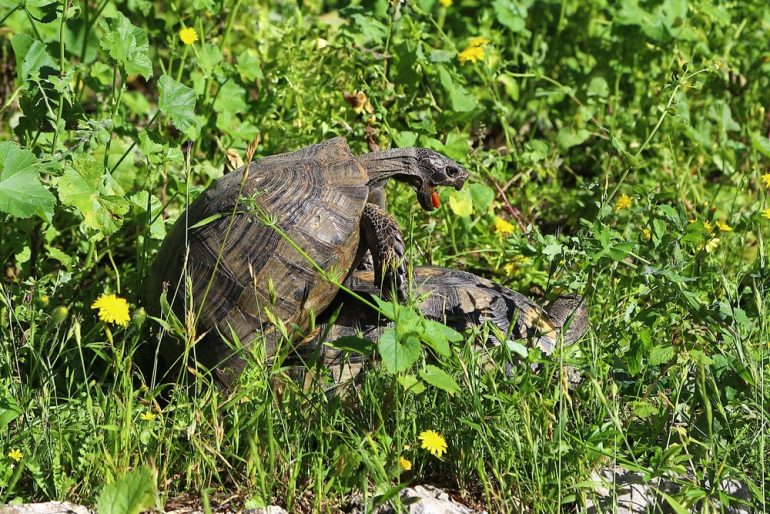The Marginated Tortoise, native to the Mediterranean region, is one of the most striking tortoise species, characterized by its flared, serrated shell margins. Despite their fascinating appearance and hardy nature, these tortoises face numerous threats in the wild. It is crucial to understand the conservation status and necessary protections for the Marginated tortoise to effectively address the challenges they face.
Conservation Status
The Marginated Tortoise (Testudo marginata) is classified as “Near Threatened” on the IUCN Red List. This status highlights the species’ vulnerability due to habitat loss, illegal pet trade, and environmental changes. Efforts to monitor and protect their populations are essential to prevent further decline.
Major Threats
Habitat Loss
One of the primary threats to the Marginated Tortoise is habitat destruction. Urbanization, agriculture, and infrastructure development have led to significant loss of their natural habitats. As their environments are fragmented, tortoises are left with smaller, isolated populations, reducing their genetic diversity and ability to thrive.
Illegal Pet Trade
The Marginated Tortoise is often targeted for the pet trade due to its appealing appearance and manageable size. Despite regulations, illegal collection continues to threaten wild populations. Captive breeding programs and stricter enforcement of wildlife trade laws are necessary to mitigate this issue.
Climate Change
Climate change poses an additional threat to Marginated Tortoises. Altered weather patterns and temperature fluctuations can affect their breeding cycles, hibernation patterns, and food availability. Adaptation strategies are required to help these tortoises cope with the changing climate.
Conservation Actions
Habitat Protection and Restoration
Protecting existing habitats and restoring degraded ones are vital steps in conserving Marginated Tortoises. Establishing protected areas and wildlife corridors can help maintain healthy populations and promote genetic diversity. Reforestation and habitat rehabilitation projects also play a critical role in providing safe environments for these tortoises.
Legal Protection and Enforcement
Strengthening legal frameworks and enforcement mechanisms is essential to combat illegal trade. International cooperation, along with local law enforcement, can help curb the illicit collection and sale of Marginated Tortoises. Public awareness campaigns can also educate potential buyers about the impacts of the illegal pet trade.
Research and Monitoring
Ongoing research and monitoring are crucial for understanding the population dynamics and threats facing Marginated Tortoises. Conservationists and scientists must work together to gather data on population sizes, health status, and habitat conditions. This information is essential for developing effective conservation strategies and policies.
Captive Breeding and Reintroduction
Captive breeding programs can support the conservation of Marginated Tortoises by bolstering wild populations. These programs aim to breed tortoises in controlled environments and reintroduce them into their natural habitats. Reintroduction efforts must be carefully managed to ensure the success and sustainability of released individuals.
Community Involvement
Engaging local communities in conservation efforts is key to the success of protection initiatives. Educating residents about the importance of tortoises and involving them in habitat restoration projects can foster a sense of ownership and responsibility. Community-based conservation programs can also provide economic incentives for protecting wildlife.
Conclusion
The conservation of Marginated Tortoises requires a multifaceted approach involving habitat protection, legal enforcement, research, and community engagement. By understanding the conservation status and necessary protections for these tortoises, we can take effective actions to ensure their survival. For more detailed information on the conservation challenges and actions needed, visit this comprehensive guide.

Introvert. Proud beer specialist. Coffee geek. Typical thinker. Pop culture trailblazer. Music practitioner. Explorer.





